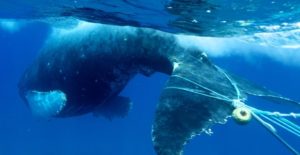
Plastic’s impact on the environment
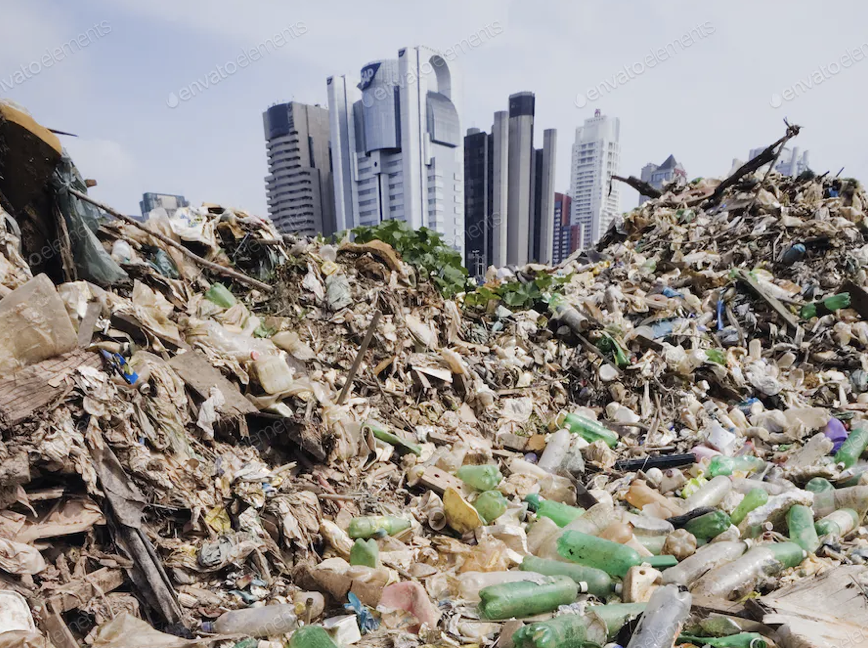

Rachel Spaulding
Plastic, in its essence, is a miracle product. The ability of single-use items to be manufactured in a cheap and quick manner has changed the way everything works. Packaging, construction, textiles, fishing nets, technology, medical devices and endless other things have been revolutionized by various forms of synthetic polymer compounds. Plastic is such a miracle product because of its durability and potential to last a lifetime. However, this ability to resist erosion and decomposition is also the reason why it will be one of the biggest burdens to humans and the environment for the foreseeable future.
Plastic is not organic. Most of the plastic we use today is made of PET (polyethylene terephthalate,) and can’t be broken down by the bacteria in the environment that we usually rely on. Because of this, the 8+ billion tons of plastic that has been synthesized isn’t going anywhere anytime soon. The degradation time of PET is around 450 years in landfill conditions. Furthermore, the process of creating plastic most used today requires a lot of petroleum; A 500 ml bottle of water requires 125 ml of oil. Production also releases greenhouse gasses and can pollute water supplies. Making a single plastic bottle uses around 3 times as much water as the bottle can hold. The environmental cost of making items that will be used a single time is a big net loss for the planet.
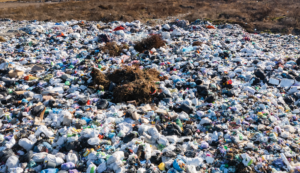
So where is all of this plastic? Everywhere.
While plastic cannot be recycled by the natural decomposers of our ecosystem, it can be eroded down into small particles also known as microplastics. Scientists have found microplastics in the deepest parts of the ocean, the remote corners of the arctic. It’s in the air we breathe, the food we eat, and us. A paper from Scientific International reported in May of this year that researchers found plastic in the blood of 77% of the participants in their study.
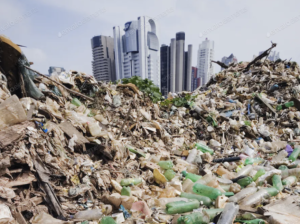
As for the bigger forms of plastic waste, we’re running out of places to store it. Projections vary, but the timeline for the United States is around 60 years before current landfills run out of space. Of course, there will be technological advancements, but what is the long-term plan? Incineration isn’t ideal because of the pollution it emits. On our current track, future humans will still be storing every piece of plastic we’ve ever used centuries from now.
The oceans have become a global dumping ground for waste. Almost 600 million pounds of trash is estimated to be floating on the surface alone. 20% of this waste is the result of commercial fishing. The natural currents and gyres of the ocean have pushed some of this waste together, and it’s about the size of Texas. The Great Pacific Garbage Patch harbors over 80,000 tons of plastic. By 2050, there will be more plastic in the ocean than in fish.
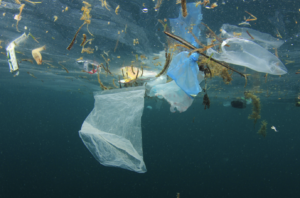
But what about recycling?
Smithsonian Magazine wrote that of the United States’ 40 million tons of plastic waste generated, only 5-6% was recycled. 85% went to landfills and the rest was incinerated. The United States doesn’t have the factories to recycle the kind of volume it’s producing, and these numbers go to show that the recycling narrative we’ve been fed is built on a false premise that we can use all the single-use items we want because they can just be recycled. There needs to be a more systematic change in waste production for things to get better. The answer is to reduce use in the first place. This could look like legislation to cut down on things like plastic grocery bags and straws, or more funding put into researching and producing biodegradable alternatives that are safer for the environment.
Plastic bag bans have shown to be promising. In Africa, plastic bag bans have become a common practice because when the bags clog drains, it creates mosquito breeding grounds and swarms that cause bouts of malaria. In India, plastic bags were killing cows at a rate of 20 per day, so bans have been in place for 2 decades. In China, a full ban was placed in 2008, and an estimated 40 billion bags have been reduced since. The California bag ban reduced consumption by 72%, and in San Jose, there was a 60% reduction in creeks in rivers and 89% reduction in plastic bags in storm drains.
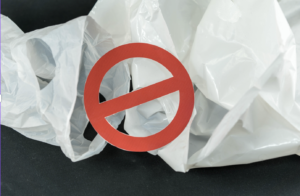
In recent years, the mission to create degradable plastics has been on the rise. Compostable plastics aren’t necessarily a solution, as they can only be composted in extremely specific conditions. Most people don’t have the resources or access to the facilities to dispose of them in this way. The term bioplastic generally refers to products made from things like plants and fungi, and are still carbon-based. Not all are biodegradable in all conditions, especially if they’re combined with synthetic polymers. Oxo-biodegradable plastics can be conventional plastics that can be broken down faster with chemical additives. Photo-biodegradable plastics can degrade with the help of oxo-degradation ultraviolet light. Hydro-degradable plastics are often plant-based and can break down with only the assistance of water. These alternatives, and the ones yet to be discovered may be the way of the future.
Even if stewardship of the environment isn’t the defining reason why we ditch plastics for good, there may be no choice in the future. Plastic as it is made today, requires the use of petroleum, a non-renewable resource. It took millions of years for oil to form, and once it’s gone it won’t be replenished during the era of humans. Current predictions believe that we will have enough oil to last until the beginning of the next century if we keep consuming it at the current rate. After that point, there will be no choice but to find an alternative to plastics. A substance that will likely only be around for such a small part of human history may impact people long after us thanks to its microscopic form.
Plastic has taken the world by storm in only 115 years. It has become an integral part of people’s lives globally for better and for worse. It will no doubt be one of the biggest technological and scientific focuses of the next century. Finding alternatives must be done, if not for environmental health now, for the fact that we will run out of supplies later. Every piece of plastic we’ve ever used in our lives still exists on the planet today (unless it was burned.) The single-use lifestyle is not sustainable forever, and the environment will bear the burden of the repercussions long after we’re gone. However, humans and technology will prevail. Time will only tell what the next miracle material will be.
Sources
Leslie, H. A., van Velzen, M. J. M., & Brandsma, S. H. (2022). Discovery and quantification of plastic particle pollution in human blood. Environment International, 163. Retrieved July 14, 2022, from https://www.sciencedirect.com/science/article/pii/S0160412022001258.
A new study on plastic bag bans – Los Angeles County, California. Reuse This Bag. (n.d.). Retrieved July 14, 2022, from https://dpw.lacounty.gov/epd/SBR/pdfs/PlasticBagsBannedAroundWorld.pdf
Osborne, M. O. (2022, May 9). At least 85 percent of U.S. plastic waste went to landfills in 2021. Smithsonian.com. Retrieved July 14, 2022, from https://www.smithsonianmag.com/smart-news/the-us-recycled-just-5-percent-of-its-plastic-in-2021-180980052/#:~:text=Of%20the%2040%20million%20tons,and%20The%20Last%20Beach%20Cleanup.
Phillips, E. (2022, June 7). 100+ plastic in the ocean statistics and facts 2022-2021. Dripfina. Retrieved July 14, 2022, from https://dripfina.com/plastic-in-the-ocean-statistics/#:~:text=Tragic.-,How%20Many%20Pounds%20Of%20Trash%20Is%20In%20The%20Ocean%20in,almost%20six%20hundred%20million%20pounds!
Disclaimer: The opinions, beliefs and viewpoints expressed by the various authors and forum participants on this web site are their own and do not necessarily reflect the opinions, beliefs and viewpoints of SAFE Worldwide.



